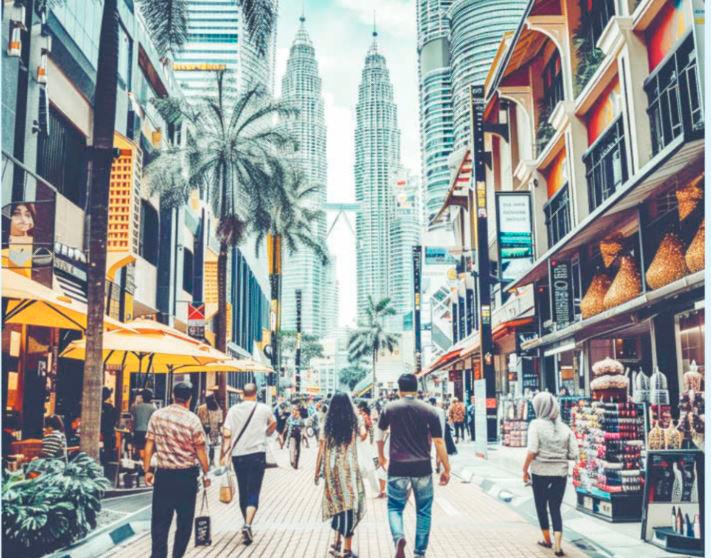PETALING JAYA: Imagine planning a holiday abroad and getting excited when reading about all the wonderful places to visit in a particular country. Travellers will be in for a shock when doing this, said TourScanner CEO Simone Semprini.
TourScanner is a tour comparison site with a diverse team of travellers from every continent (except Antarctica), including tech developers, content writers, editors, digital marketers and managers.
“We wanted to shed light on the issue and showcase the staggering difference between local and world stereotypes by using AI to examine how residents and global travellers perceive top city destinations.”
Semprini said her company collected country stereotypes of the local view and world view from ChatGPT, which was then put into MidJourney, an AI image generator, to create an image of the stereotypes of each city from the local and world views.
She said Kuala Lumpur, which is home to the Petronas Twin Towers, is considered by the world to be a warm, diverse metropolis, boasting dozens of malls for seasoned shoppers to peruse.
“As a relatively new city, it is known for being a gem of Southeast Asia, a melting pot of cultures and beauty, which is a sentiment mirrored in the AI world-view images.
“However, all these world-view positives which make it such a desirable destination are what’s making it less so among Malaysians, who say it is a busy metropolis with plenty of job opportunities, but expensive and full of traffic.
“These are words Malaysians themselves are using to describe Kuala Lumpur as depicted in the AI-reimagined image.”
Semprini said like all major cities, Kuala Lumpur has seen a significant increase in tourism in the last year alone, so it is no surprise that traffic is becoming an increasing source of frustration.
She said a recent study revealed that Malaysians spend 81 hours per year driving in rush hour traffic, with a 43% congestion level which gives a different perspective of the city.
“In the age of social media, the romanticised expectations placed on dream destinations may not match reality, which is what is happening in Kuala Lumpur and the other cities we studied.”
Semprini said Paris, which is Europe’s most popular city break, has made headlines for this phenomenon, dubbed “Paris Syndrome”, as visitors felt very disappointed or were even shocked by their experiences there.
She said Southeast Asia, with Western culture and entertainment, depicted Kuala Lumpur and Bangkok as bucket list destinations.
“When quizzed on how the world views Bangkok, AI described it as an exotic, party city with iconic landmarks bursting with unique culture to explore.
“However, the Thais described it as a place with a distinct contrast between traditional and modern life, with economic opportunity and street food, but a victim of traffic, pollution and flooding.”
Semprini said as 2023’s most visited city, pollution is a big concern in Bangkok as captured in AI’s local view image, where smog shields the view of its skyline and traffic fills the streets, often disrupting day-to-day living in the city.
TourScanner co-founder Guillaume Picard said when booking a city break, it is not uncommon for travellers’ expectations to be shaped by “romanticised narratives and glossy portrayals” as its study demonstrated.
“But often, this can lead to disappointment or worse, tourists being wilfully ignorant of the important issues locals are facing. On the other hand, locals have a far harsher opinion of their cities and may be too quick to overlook the beauty that draws in tourists.
“While every city boasts its own set of positives and negatives, maintaining an open mind about the realities of each destination can foster a more enriching and respectful travel experience,” he said.









